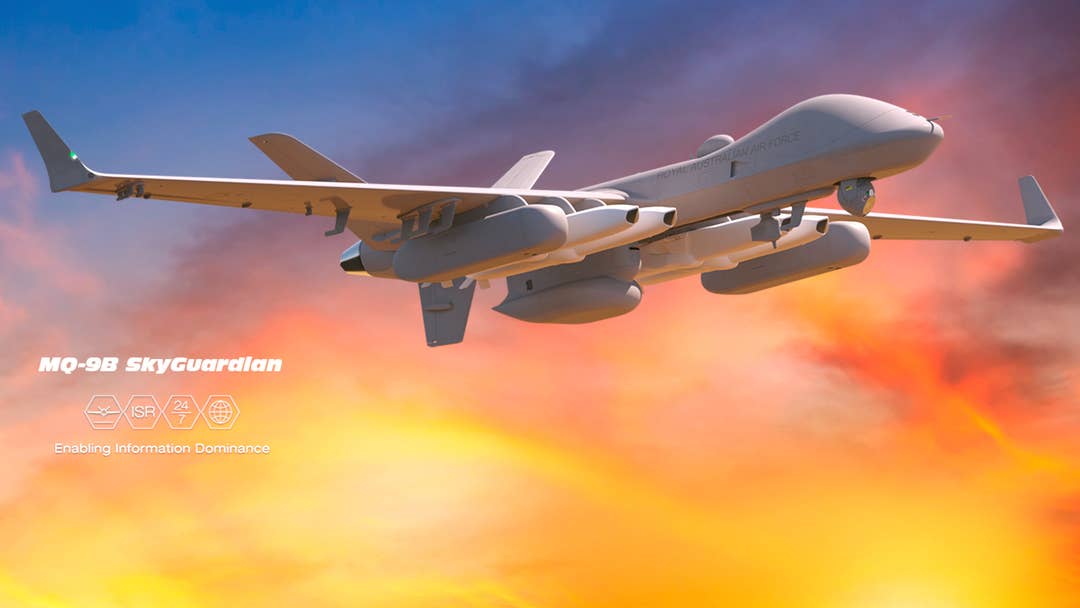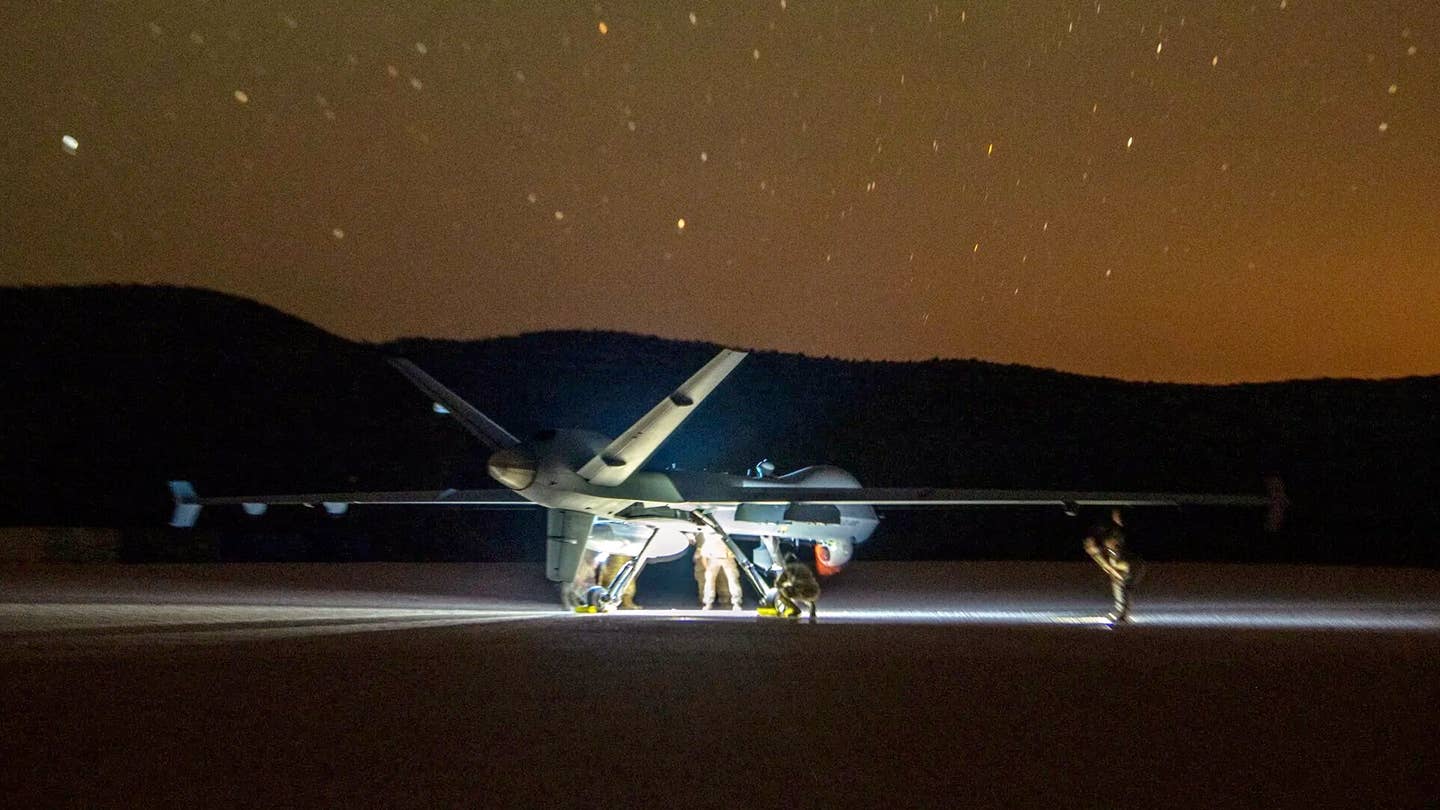The MQ-9B drone is poised to strengthen India’s surveillance capabilities as the country prepares to acquire 31 high-altitude, long-endurance (HALE) UAVs from the United States.
THAAD & Patriot Missiles To Roar In China’s Backyard As US Defense System Approved For S.Korea Deployment
This strategic acquisition of MQ-9 drones will be a pivotal step in bolstering India’s monitoring capabilities along the Line of Actual Control (LAC) with China and the Indian Ocean, promising enhanced security and vigilance in crucial regions of national importance.
But, the process of acquiring these High-Altitude Long Endurance (HALE) drones by India has faced delays despite being a long-standing plan. These delays were primarily due to the emphasis on self-reliance in India’s defense sector and the limitations imposed on imports.
However, once the drones are deployed, they will significantly improve the Intelligence-Surveillance-Reconnaissance (ISR) capabilities of the Indian Armed Forces.
Equipped with advanced payloads, these weaponized HALE drones have the potential to carry out long-endurance missions and effectively strike strategic targets in mountainous terrains as well as the maritime domain.

Following the Galwan Valley clashes in 2020, the Indian Navy inked a contract to lease two MQ-9 UAVs, and the lease agreement was extended after that.
Since their deployment, open-source data suggests that these drones have been actively monitoring Chinese activities in various regions, ranging from Ladakh to the Andaman and Nicobar Islands.
In November 2022, GA-ASI, the manufacturer of the UAVs, announced that these leased drones had successfully accumulated 10,000 flight hours over two years, starting from their inaugural flight on November 21, 2020.
The MQ-9 UAVs have played a crucial role in enabling the Indian Navy to effectively cover a vast operating area encompassing over 14 million square miles.
Nonetheless, with an impressive operational history in conflict zones, the MQ-9 drone has added another remarkable feat. In a significant achievement, it has successfully carried out its maiden landing on a rugged dirt landing zone.
In a statement, the US Air Force announced that a US military MQ-9 Reaper (Reaper MQ-9A) recently achieved its first-ever landing on a dirt surface.
This success introduces a new operational capability for the aircraft, allowing it to transcend the limitations of conventional, paved runways that may not be viable in high-intensity combat scenarios.
Why Is This Success Important?
In a recent training exercise conducted by the Air Force Special Operations Command (AFSOC) on June 15, air commandos achieved a notable milestone by successfully landing a Reaper drone on a secluded dirt strip near Fort Stockton in western Texas.
Typically, the Reaper drone relies on “line of sight of antennas” for takeoff and landing, requiring manual control by aircrew members, as stated by the US Air Force.
However, the military highlighted that this achievement signifies the drone’s newfound capability to operate from any location worldwide, further expanding its operational reach and versatility.
“This is a significant achievement for Air Force Reserve Command, AFSOC, the MQ-9 community, and the joint force as a whole,” said Lt. Col. Brian Flanigan, 2nd SOS director of operations.
“This team of aircrew, maintainers, and special tactics Airmen have proven the Reaper can operate anywhere in the world and is no longer beholden to the ‘leash’ of perfectly paved runways or line-of-sight antennas traditionally used to take off and land the aircraft” Flanigan added.
In light of the challenges posed by near-peer rivals and potential adversaries, the military has recognized the need to explore alternative strategies beyond traditional bases and runways that may be vulnerable during times of conflict.
Thus, there has been a shift towards embracing new methods of warfare. Specifically, the Air Force is focused on acquiring the capability to engage in combat from austere locations.
This strategic adaptation enables the Air Force to respond to evolving threats effectively and operate in a manner that optimizes both its ability to survive and its tactical maneuverability.
During the exercise, the Air Force took the opportunity to explore innovative modifications to the conventional roles of drones in missions.

In this regard, a travel pod was affixed to the Reaper drone, enabling it to provide logistical support by delivering essential supplies to soldiers stationed at the dirt landing zone.
This adaptation showcases the flexibility of the Reaper and its potential to expand beyond its traditional reconnaissance and strike capabilities.
Dubbed ‘Reaper Express,’ this innovative approach involves utilizing a travel pod to establish an operational concept for delivering essential items to remote locations through the MQ-9 drone, as stated by Flanigan.
While the travel pod may have limited carrying capacity, its significance lies in the potential to transport crucial resources that could make a significant difference in critical scenarios.
For instance, it could facilitate the transportation of vital aircraft parts to isolated airfields or provide a blood supply for casualties in the event of a base attack.
The success marked its second notable accomplishment in just two months. In early May, Air Force personnel successfully executed the MQ-9’s inaugural highway landing as part of a comprehensive training exercise in rural Wyoming.
This extraordinary feat involved coordinating with a large MC-130J Commando II aircraft and A-10 Thunderbolt II attack planes.
The ability to deploy MQ-9 drones from remote and challenging locations, particularly those lacking suitable runways or extensive roadways, holds great significance, especially in scenarios involving distributed operations against near-peer adversaries like China or Russia.
Given the Air Force’s assessment that the MQ-9 may face challenges in high-risk environments during future conflicts, there is a heightened priority to expand the operational range of these drones and explore new roles for them.
Nonetheless, the true impact of the MQ-9’s capability to operate from highly remote locations and fulfill logistical roles with small critical supplies will only become evident over time.
As the MQ-9 appears to be approaching the later stages of its service with the US military, recent upgrades have breathed new life into the drone.
These upgrades encompass a range of enhancements, such as adding air-launched drone capabilities, expanded sensor systems, self-defense pods, and various mission payloads.
- Contact the author at ashishmichel(at)gmail.com
- Follow EurAsian Times on Google News




